The hand towel (Handtuch) was a standard issue item in the German Army. Often, two were issued, but sometimes only one. Not every soldier got a Handtuch, but these were basic kit items, issued en masse; the 285. Sicherungs Division reported that their workshops cleaned and reissued 1,180 hand towels in the one-year period from October 1942 through September 1943. Here are entries from 3 different equipment issue lists, showing issue of hand towels to three different soldiers.
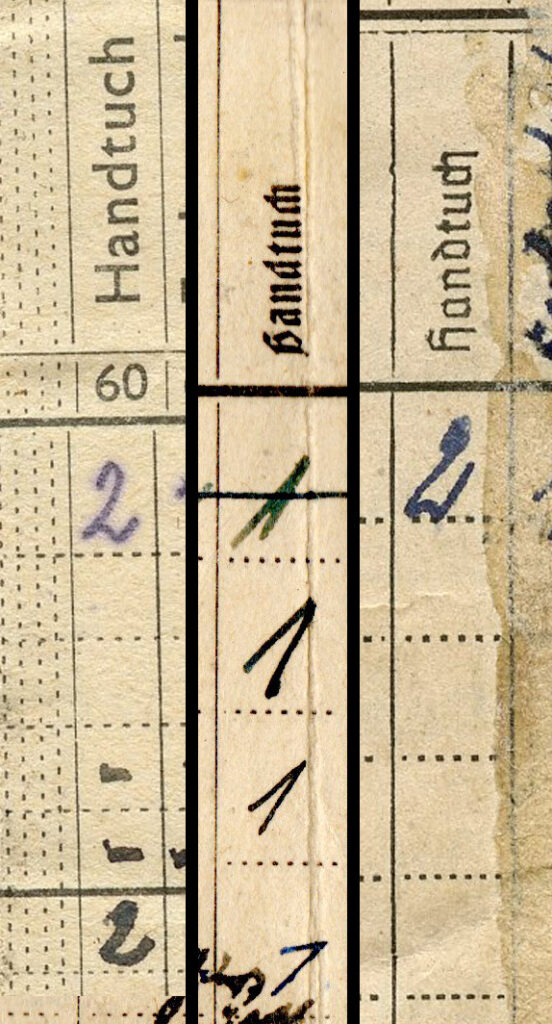
The hand towel was made of linen which was the typical fiber used for toweling at that time. Cotton terrycloth was not yet in wide use for this purpose in Germany, and especially during the war years, cotton became relatively scarce. Linen has many advantages over cotton for use as a towel. Linen is two to three times stronger than cotton and is also more absorbent. It dries much faster than cotton, which is an important factor for field soldiers. It also has natural antimicrobial properties. A linen towel in a bread bag in the rainy season is more likely to be usable for a soldier’s morning shave, and it’s less likely to get moldy, compared to a modern cotton towel.
Purportedly original Wehrmacht hand towels can be hard to authenticate today. Many old linen hand towels have been stamped with recreated property markings in recent years. I will show a few here that I judge to be original based on my expertise and on comparison with other known originals.
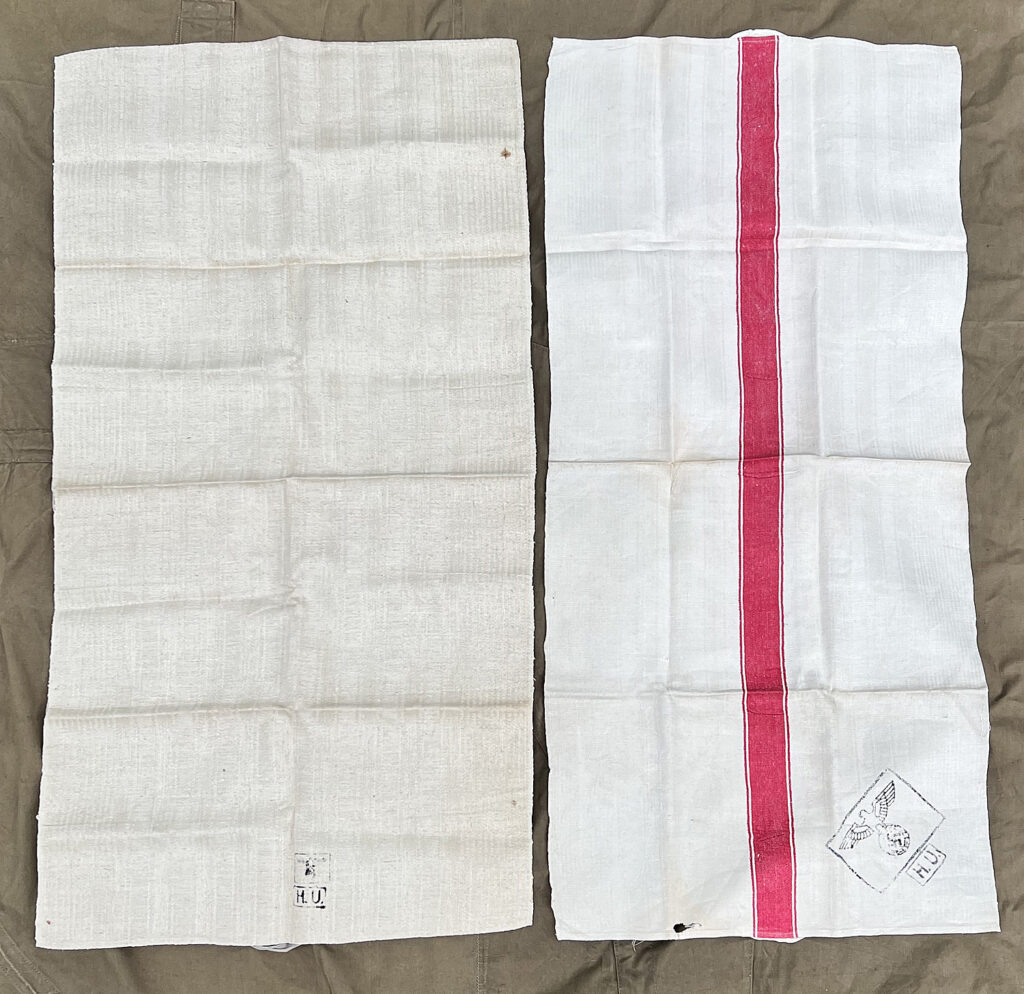
The towel on the left above is, in my opinion, a very typical original. It’s made of a natural-colored linen with vertical stripes woven in to the fabric. The top and bottom both have hanging loops made out of thin fabric. These loops are machine sewn into the seam. The towel has a German Army property stamp. “H.U.” is an abbreviation for “Heeres-Unterkunft,” Army lodging. This towel measures about 52 x 100 centimeters.
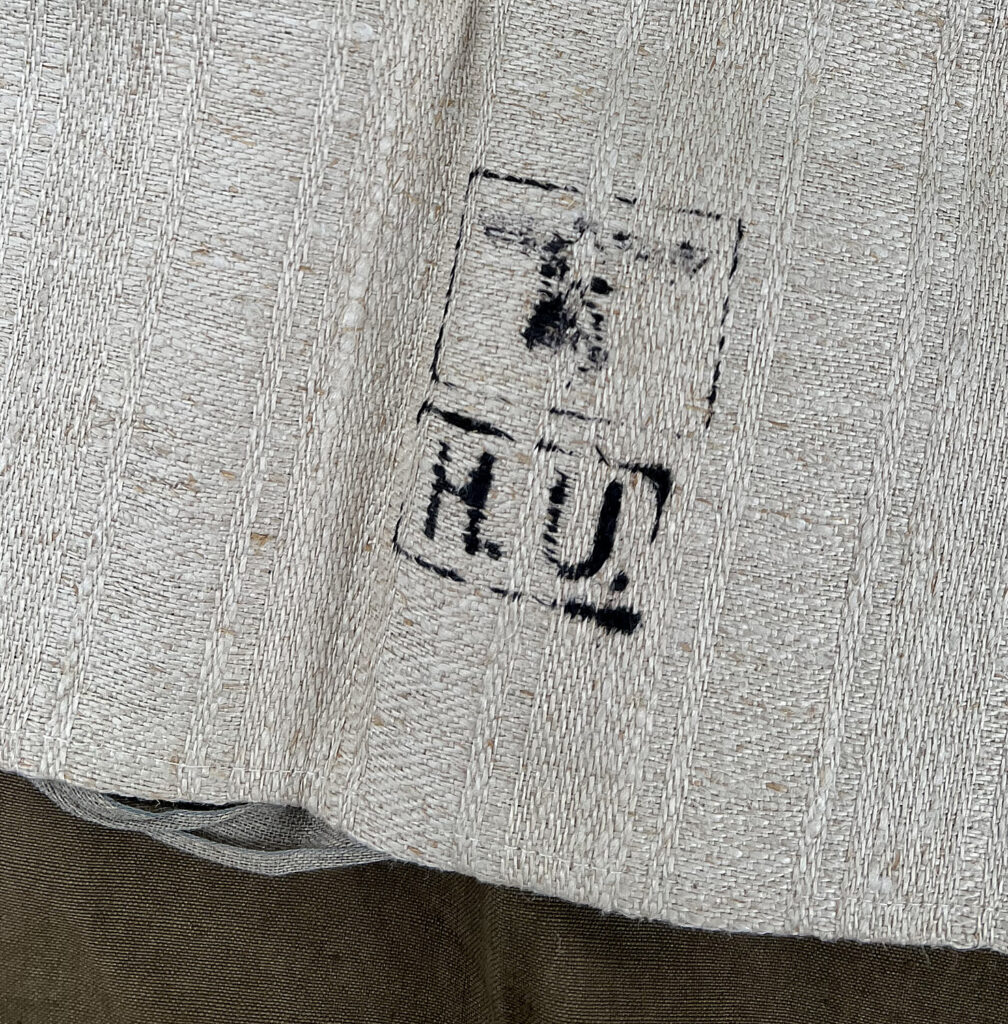
The other towel in the above photo measures about 48 x 100 centimeters. In comparison to the other towel it is smoother, not as coarse. It has woven vertical stripes as well as a central woven red stripe. It also has two hanging loops sewn in to the seams. The large stamp on this is a size that might have been intended for use on blankets. There were countless variations of these “H.U.” stamps.
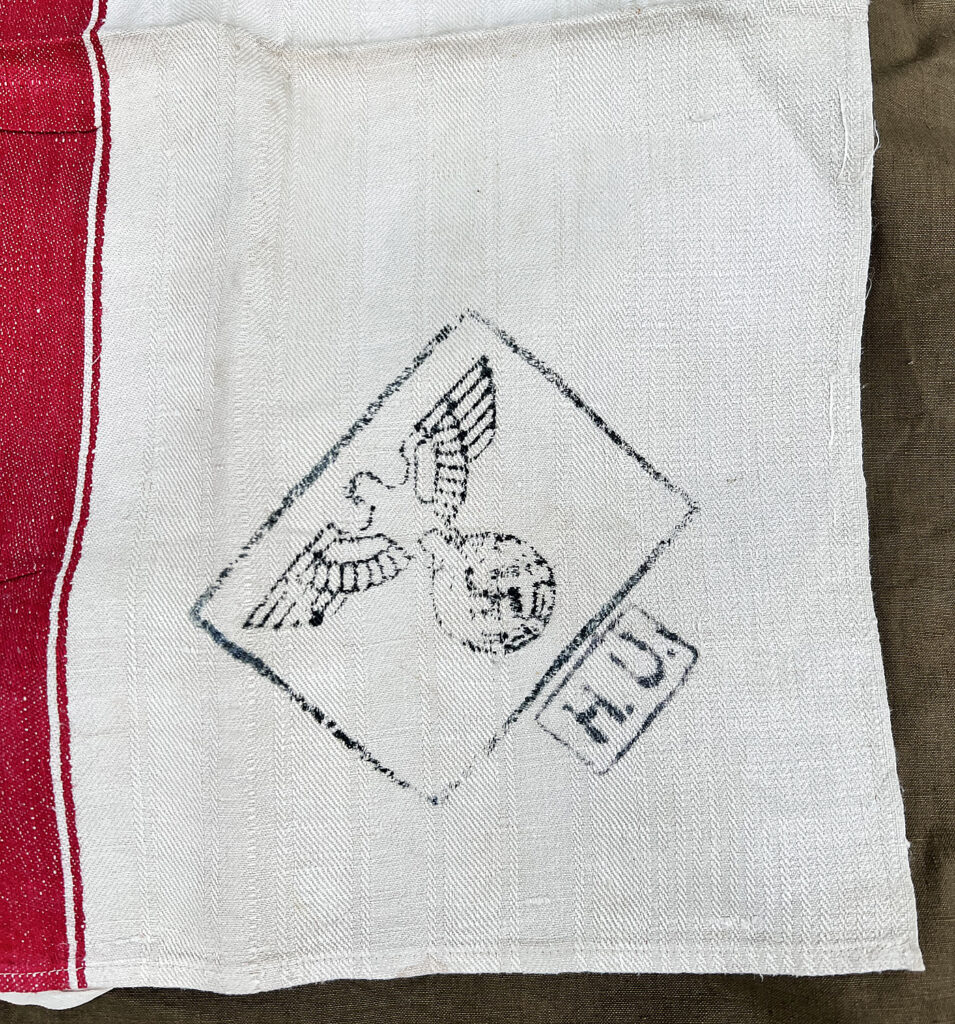
Here are two more original towels.

The towel on the left measures about 50 x 94 centimeters. It appears to be well-used. This towel, again, is made of a coarse linen, with vertical stripes in the weave. The hanging loops at the corners are machine sewn. This one has a simple property stamp. This may have been intended for use by a different Reich organization as there is no “H.U.” marking.
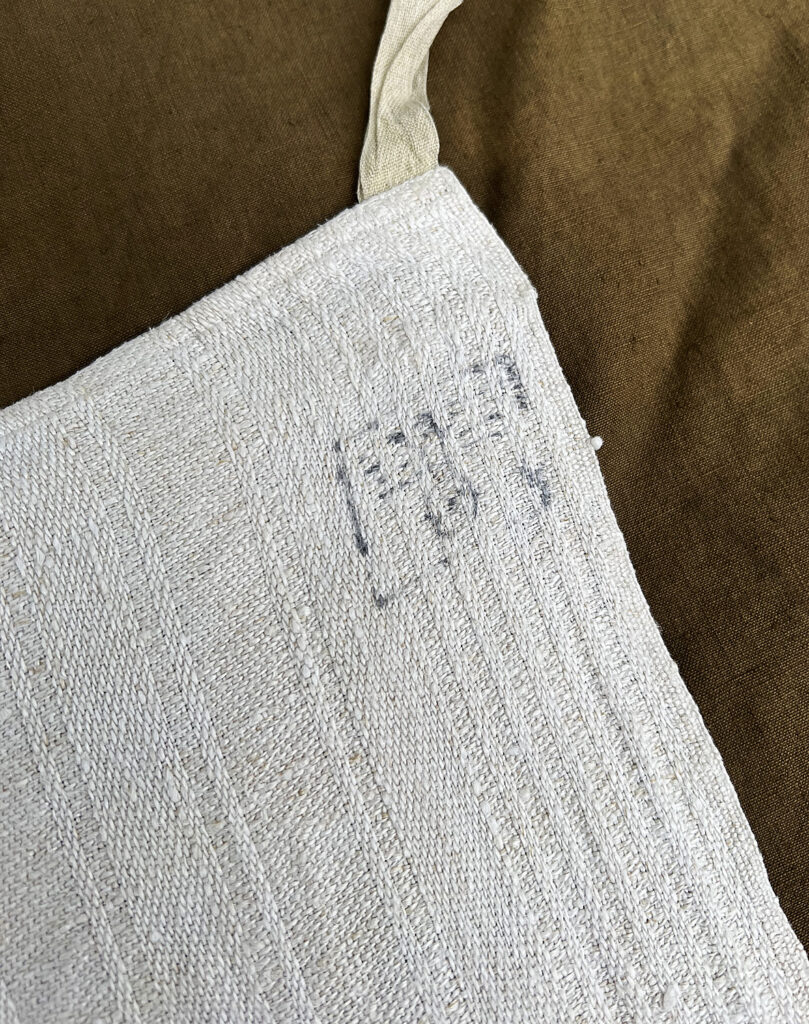
The towel with the red stripes was brought back by a GI veteran together with some linen handkerchiefs. The measurement is 60 x 77 centimeters. Unlike the others, there is no striped texture. The weave is smooth and plain. This towel is marked in two places with a Reich eagle, “H. Laz.” indicating Army hospital property, and “R.G. 1938.” The meaning of the “R.G.” is unknown to me.
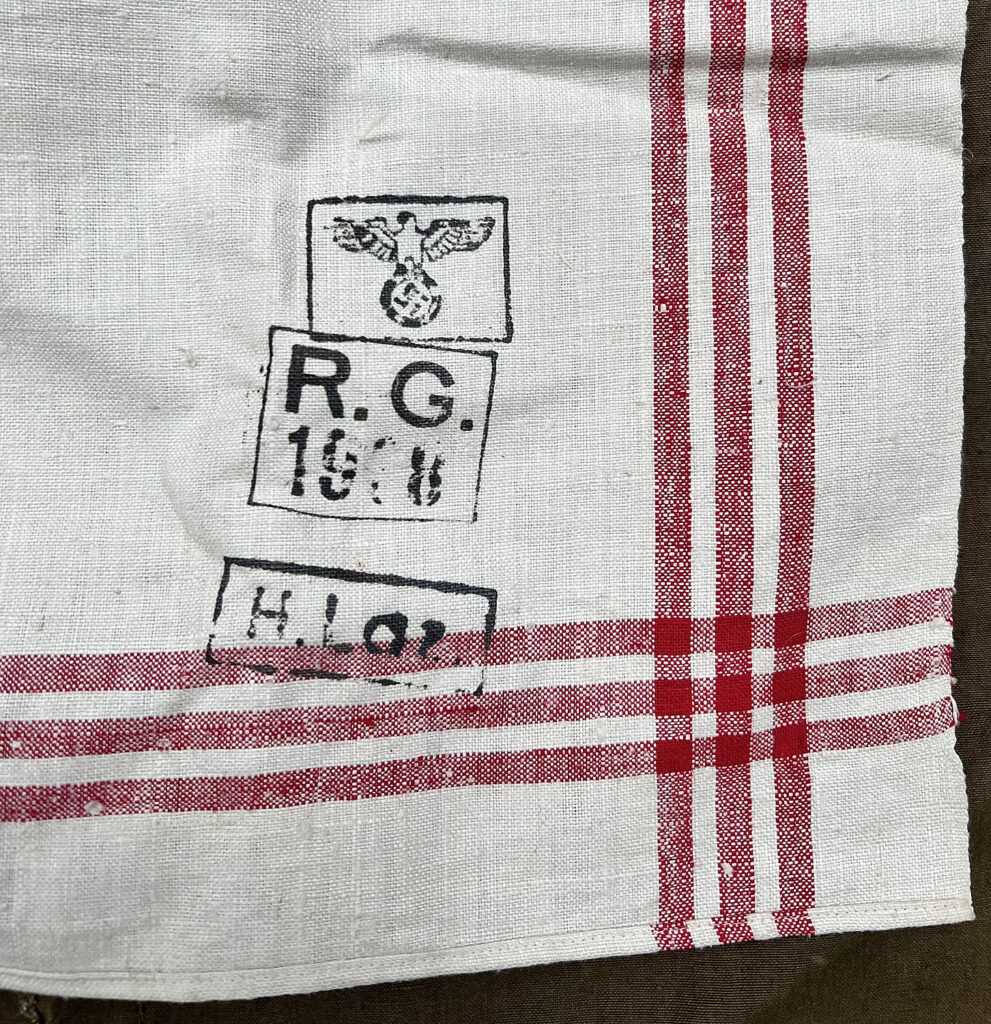
These towels are all different and must represent only a tiny sample of the types in use at the time. These towels, found in the SS laundry at K.Z. Flossenbürg, and on display today in the museum there, also reflect this variety- with or without stripes in the weave, with and without colored stripes. It’s likely that the towels were the same as some that were commercially available at the time.
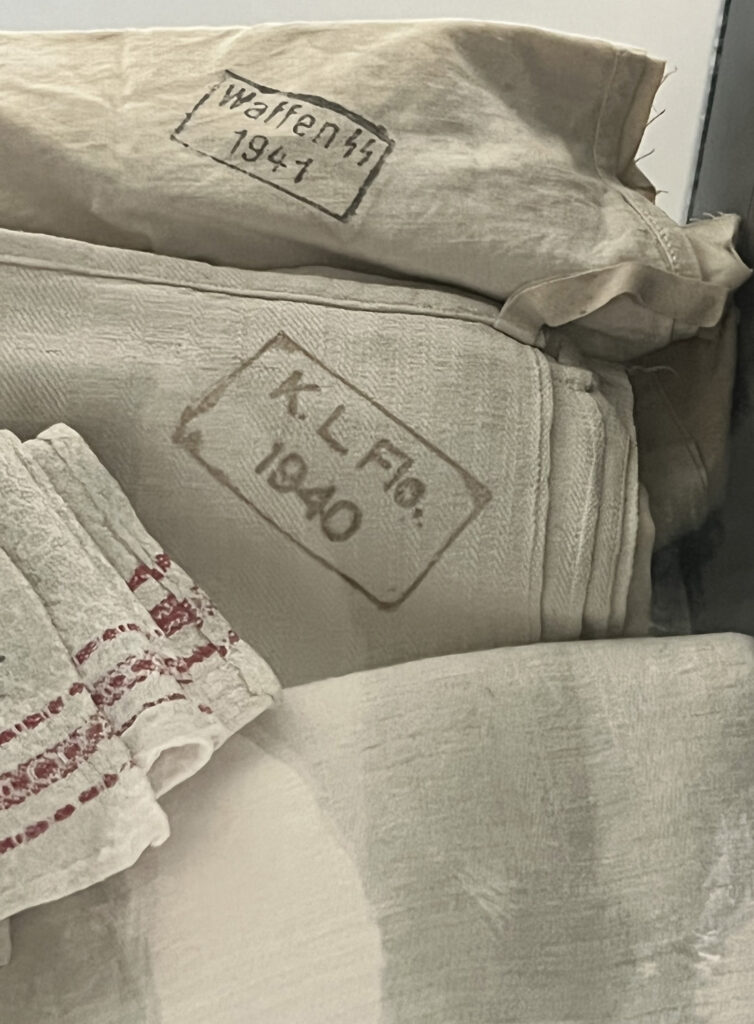
There is no doubt that among the millions of men in the German Army during wartime, some would have used their own towels that they bought or brought from home. These would typically have been similar to these examples, made of linen.